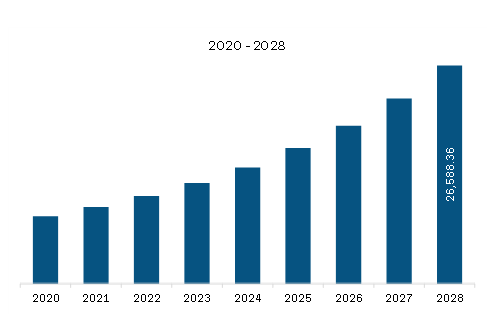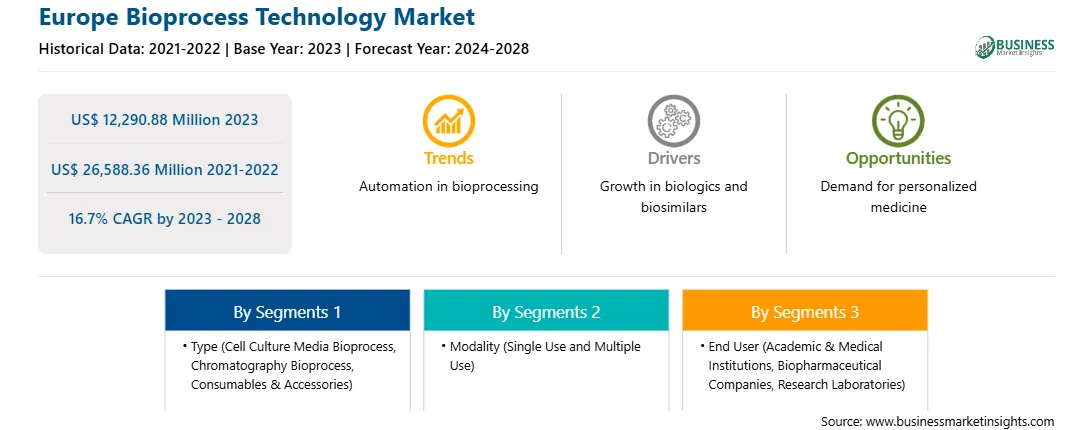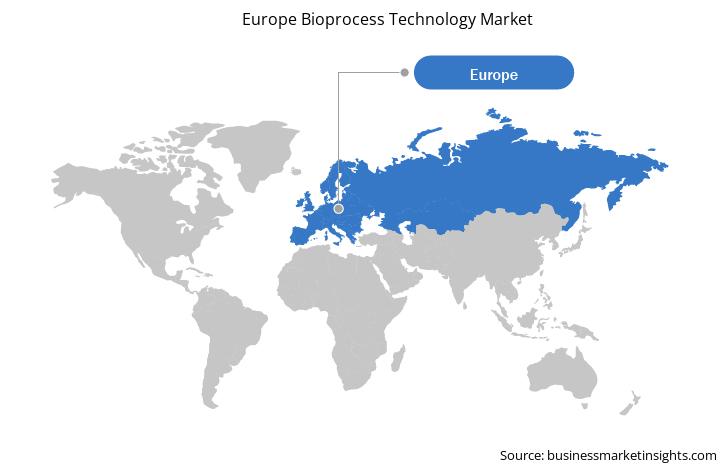Advanced bioprocess technologies bridge R&D with production. Several players are introducing a wide range of new bioprocessing technologies in the market. On December 4, 2020, IDBS (a provider of software informatics solutions for the biotech and pharmaceutical industries) announced the launch of Polar. Polar creates a new product category called BioPharma Lifecycle Management (BPLM) to streamline drug development and production in biopharma research. Polar is designed and deployed to rapidly solve challenges associated with workflow, process quality, collaboration, and data analysis that have plagued the existing software solutions, including laboratory information management system (LIMS) and electronic laboratory notebook (ELN). As a result, there will be less human errors and an improvement in overall accuracy. It will reduce manual data processing and transcription, leading to fewer human errors and enhanced overall accuracy. It also has extensive search features that make it easier for users to locate what they are searching for, preventing the need for pointless duplication of effort.
METTLER TOLEDO’s Dynochem Biologics is a purpose-built simulation software that supports upstream and downstream unit activities in bioprocessing at any scale. Bioprocess engineers and scientists use the software to choose appropriate process operating parameters and establish scales equivalency. Utilities enable quick evaluation of equipment performance with minimal data, whereas more potent models leverage the existing data streams for process characterization. Initial projects can be completed quickly with the help of responsive application expertise, rich training resources, and a model library that is already built. Peptides, mAbs, vaccinations, and viral vectors are a few examples of the many applications.
Merck’s new BioContinuum Platform advances biotherapeutic drug manufacturing through improved efficiency, simplified plant operations, and greater quality and consistency. In addition, Merck’s Pellicon Single-Pass Tangential Flow Filtration aid in intensifying operations associated with the purification of therapeutic proteins. Thus, the introduction of various new-age bioprocess technologies is likely to provide lucrative opportunities for the market growth during the forecast period.
According to Germany Trade & Invest, the country is the second largest exporter of medicinal products and ranks among the top pharmaceutical producers across the world. Owing to the rising demand for personalized medicine, Germany has also evolved into one of the main suppliers of novel biopharmaceuticals. Biologics hold a considerable share of the pharmaceutical market in Germany due to their high therapeutic potential. According to a report by Germany Trade & Invest (GTAI) from 2015 to 2019, the biologics market grew by 11.6 % on average annually (more than twice the growth of the overall pharma market). The total revenue of biopharmaceuticals in Germany was US$ 13.96 billion in 2019, equivalent to more than a quarter of the pharmaceutical market. Germany has a major European pharmaceutical market and is the fourth largest across the world. In 2019, sales in the pharmaceutical industry in Germany increased by 5.7 %, from 2018, reaching US$ 51.01 billion (ex-manufacturer prices). More than 500 pharmaceutical companies are located in Germany. SMEs are the backbone of the economic sector, with around 90% of drug manufacturers having less than 500 employees. Thus, the growing pharmaceutical market in Europe will propel the use of bioprocess technology as biotechnology helps the pharmaceutical companies develop new products, processes, methods, and services and improve existing ones.
Strategic insights for the Europe Bioprocess Technology provides data-driven analysis of the industry landscape, including current trends, key players, and regional nuances. These insights offer actionable recommendations, enabling readers to differentiate themselves from competitors by identifying untapped segments or developing unique value propositions. Leveraging data analytics, these insights help industry players anticipate the market shifts, whether investors, manufacturers, or other stakeholders. A future-oriented perspective is essential, helping stakeholders anticipate market shifts and position themselves for long-term success in this dynamic region. Ultimately, effective strategic insights empower readers to make informed decisions that drive profitability and achieve their business objectives within the market. The geographic scope of the Europe Bioprocess Technology refers to the specific areas in which a business operates and competes. Understanding local distinctions, such as diverse consumer preferences (e.g., demand for specific plug types or battery backup durations), varying economic conditions, and regulatory environments, is crucial for tailoring strategies to specific markets. Businesses can expand their reach by identifying underserved areas or adapting their offerings to meet local demands. A clear market focus allows for more effective resource allocation, targeted marketing campaigns, and better positioning against local competitors, ultimately driving growth in those targeted areas.
Europe Bioprocess Technology Strategic Insights

Europe Bioprocess Technology Report Scope
Report Attribute
Details
Market size in 2023
US$ 12,290.88 Million
Market Size by 2028
US$ 26,588.36 Million
Global CAGR (2023 - 2028)
16.7%
Historical Data
2021-2022
Forecast period
2024-2028
Segments Covered
By Type
By Modality
By End User
Regions and Countries Covered
Europe
Market leaders and key company profiles
Europe Bioprocess Technology Regional Insights

Europe Bioprocess Technology Market Segmentation
The Europe bioprocess technology market is segmented into type, modality, end user, and country.
Based on type, the Europe bioprocess technology market is segmented into cell culture media bioprocess, chromatography bioprocess, and consumables & accessories, and others. In 2023, the consumables & accessories segment registered the largest share in the Europe bioprocess technology market.
Based on modality, the Europe bioprocess technology market is bifurcated into single use and multiple use. In 2023, the single use segment registered a larger share in the Europe bioprocess technology market.
Based on end user, the Europe bioprocess technology market is segmented into academic & medical institutions, biopharmaceutical companies, research laboratories, and others. In 2023, the biopharmaceutical companies segment registered the largest share in the Europe bioprocess technology market.
Based on country, the Europe bioprocess technology market is segmented into the UK, Germany, France, Italy, Spain, and the Rest of Europe. In 2023, Germany segment registered a largest share in the Europe bioprocess technology market.
BioPharma Dynamics Ltd; Corning Inc; Danaher Corp; Eppendorf SE; Lonza Group AG; Merck KGaA; Repligen Corp; Sartorius AG; STAMM Biotech; and Thermo Fisher Scientific Inc are the leading companies operating in the Europe bioprocess technology market.
The Europe Bioprocess Technology Market is valued at US$ 12,290.88 Million in 2023, it is projected to reach US$ 26,588.36 Million by 2028.
As per our report Europe Bioprocess Technology Market, the market size is valued at US$ 12,290.88 Million in 2023, projecting it to reach US$ 26,588.36 Million by 2028. This translates to a CAGR of approximately 16.7% during the forecast period.
The Europe Bioprocess Technology Market report typically cover these key segments-
The historic period, base year, and forecast period can vary slightly depending on the specific market research report. However, for the Europe Bioprocess Technology Market report:
The Europe Bioprocess Technology Market is populated by several key players, each contributing to its growth and innovation. Some of the major players include:
The Europe Bioprocess Technology Market report is valuable for diverse stakeholders, including:
Essentially, anyone involved in or considering involvement in the Europe Bioprocess Technology Market value chain can benefit from the information contained in a comprehensive market report.